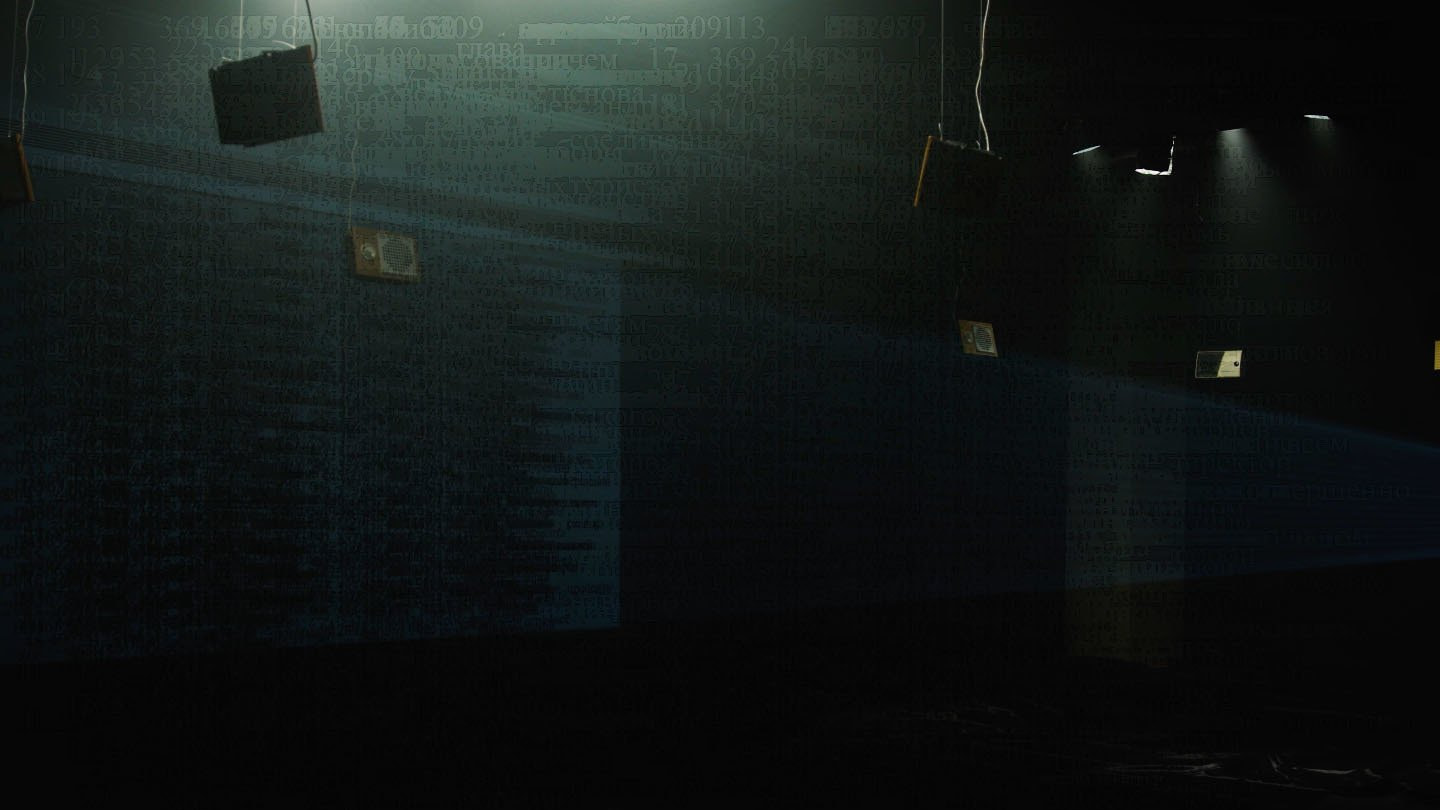The multichannel sound installation is inspired by the research of two phenomena of the information society—mass media noise and propaganda. The purpose of the research—to reveal the noisy nature of the media, whatever their ideological or political affiliation. The installation is an allegorical quest for the answer to the question—what is the real content of the broadcasted messages, the beauty and the sublime, as stated by the media, or something else. Do the contemporary media promote “patriotism,” “democracy,” “social justice,” “freedom and equality,” or they are nothing more than a propaganda tool that creates a virtual world of illusion devoid of meaning out of pieces of half-truth, thus completing the postmodern act of killing the truth? Are we doomed to failure trying to find the truth when the only possible result is an obsessive and displeasing ringing in the ears? The main question today is, can the truth exist in the information society?
The installation is based on an experiment at the intersection of linguistics and acoustics. Recordings of the radio broadcasts (roughly divided into pro-governmental and oppositional) made during twenty-four hours were used as material for the experiment. They were transcribed, and then the resulting texts served as the basis for frequency dictionaries (for each radio station and a general one) made with frequency analysis software. Then the most frequently used words (except for functional words) with their immediate context were cut out and sorted by frequency—from the most to the least frequently used. The sound is reproduced using eight prepared radio sets situated along the perimeter of the room. All the sets are connected to the “center” consisting of several playback devices, amplifiers, and a microcontrol unit. The microcontrol unit manipulates devices using a preset algorithm. Each radio set starts reproducing its own recording, prepared using DAW, at a certain point. Radio sets on the left side of the room reproduce oppositional station broadcasts, while those on the right play pro-governmental station recordings. As a result of multiple overlaps, the sound reaches its climax and becomes noisy—it becomes impossible to distinguish words or phrases.
Broadcast recordings, Antconc concordance software, sound processing: DAW Cockos Reaper, eight prepared radio sets, micricontrol-based operating module with sound reproducing devices and amplifiers.
*Tinnitus — ringing or noise in the ears originating without any external acoustic stimulus.
ABOUT THE ARTISTS
Tatlin Tower—art-group, founded in 2018 in St.Petersburg by Dmitry Grigorov and Yana Djamalova. The esthetic and theoretical practices of the group are inspired by the Russian Avant-garde, Italian Futurism, and totalitarian ideologies of the early twentieth century. Renouncing to the ironic and parodic reinventing of the tradition, the artists chose an impartial and sincerely utopian approach to the contemporaneity and the future. Their main focus is on the experimental and electroacoustic music. Compositions and installations are created using hand-made noise instruments made of building rubbish and scrap metal, repurposed household appliances, repurposed orchestra instruments, analog synthesizers, hand-made midi-controllers, ambiophony, and microtonality. As of now, the most important work of the art-group is a 16-channel ambisonic reconstruction of a Moscow performance of Arseny Avraamov’s Symphony of Industrial Horns (1923) presented in early 2019.
